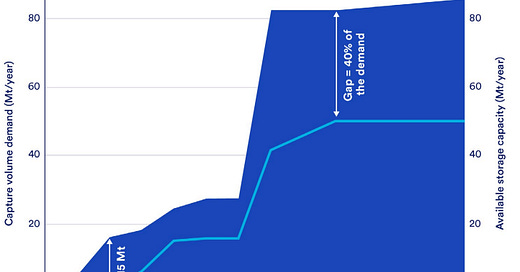Mind the decarbonisation gap
Storage capacity needs to scale fast if carbon capture is to reach its potential
Industrial assets have long lifetimes - 40 years on average - and with investment lead times stretching several years into the future, there is little opportunity for them to decarbonise in the timetable required to make a difference to climate change.
In that context, carbon capture is a vital tool to accelerate industrial decarbonisation.
For businesses involved in accelerating the adoption of this technology it is important that carbon prices remain high and stable, thus ensuring industry has a strong incentive to capture the carbon. The rapid removal of free carbon allowances for industry - which muffle the impact of high carbon prices - is also vitally important.
However, for CCUS to be commercially viable you need two additional things. First, infrastructure that enables the utilisation of the carbon if there is a suitable application. Second, sufficient storage for the carbon to be permanently locked away.
It’s this final letter in the CCUS acronym - ‘S’ for storage - that poses the biggest challenge to the industry’s success, and is by far the most important stage in the process. Afterall, there’s no point in capturing the carbon if there’s nowhere to store it.




